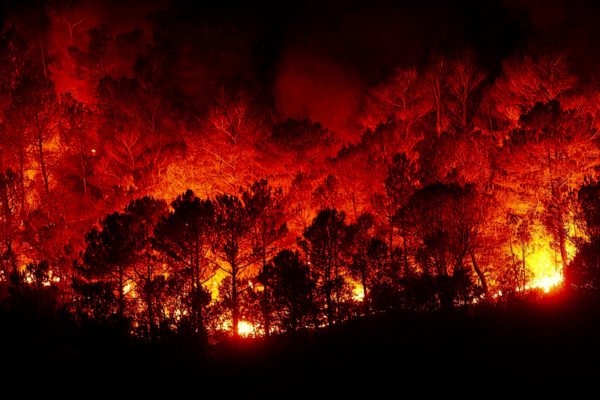In the ever-growing landscape where homes, businesses, and outdoor activities intertwine with nature, the threat of wildfires looms over lives and property. Mitigating this risk requires hands-on measures implemented on properties to minimize potential fire damage. Enter the Pueblo tree Service, the premier authority on wild fire mitigation service expertise in Pueblo CO. For those eager to delve deeper into understanding and addressing the wildfire menace in their specific areas of concern, we stands as a valuable resource. Residents seeking proactive steps and reliable information can turn to guidance and insights.
Reasons behind Wildfires:
Climate Change:
Climate change leads to an increase in the frequency and severity of wildfires due to higher temperatures and changing weather patterns. Dry landscapes caused by prolonged drought conditions make it easier for fires to spread quickly.

Human Activities:
Human actions, such as unattended campfires, thrown away cigarette butts, and sparks from equipment, play a major role in causing wildfires. The expansion of urban areas into wildland interfaces also increases the chances of unintentional fires occurring.
Invasive Species:
The presence of invasive species, specifically plants that are not native to an ecosystem, raises the risk of wildfires by providing additional fuel for them. Additionally, these non-native plants disturb the natural pattern of fires in an area, making it easier for landscapes to catch fire.
Fuel Accumulation:
The build-up of fuel, such as dead plants, leaves, and overgrown vegetation, creates a significant amount of material that can be easily ignited by wildfires. Neglecting to control and reduce these fuel loads leads to a faster spread of fires.
Solutions for Fire Prevention:
Regular Fuel Reduction Programs:
Implement routine controlled burns to diminish accumulated vegetation and reduce fuel loads.
Conduct consistent mechanical thinning to establish defensible spaces and disrupt vegetation continuity.
Community Empowerment for Prevention:
Establish and promote community driven fire prevention plans, including clear evacuation routes and efficient emergency communication systems.
Launch public awareness campaigns to educate residents about fire risks, urging active participation in creating defensible spaces.

Enhanced Regulatory Measures:
Strengthen building codes and zoning regulations to limit construction in high-risk fire zones.
Enforce restrictions on outdoor activities during elevated fire danger periods, imposing penalties for non-compliance.
Advanced Early Detection Systems:
Invest in cutting edge technologies like infrared cameras, satellite monitoring, and drones to detect and monitor wildfires at their inception.
Develop and maintain a robust network of fire lookout towers and surveillance systems for swift response.
History Of Fire Adapted Communities
The evolution of Fire Adapted Communities (FAC) in the United States unfolds as a response to the escalating threat of wildfires in wildland-urban interface zones. As catastrophic events, like the 1991 Oakland Hills Firestorm and the 2002 Hayman Fire, emphasized the limitations of traditional firefighting approaches, a paradigm shift emerged. The concept of Fire Adapted Communities gained prominence, advocating for proactive measures and community collaboration of wild fire mitigation risk. Organizations such as the Fire Adapted Communities Learning Network and the National Fire Protection Association have been pivotal in disseminating knowledge and fostering resilient communities. Today, the ongoing history of FAC involves continuous research, outreach, and adaptive strategies for a fire-resilient future.
Frequently Ask Questions
Why is fire prevention crucial in land management?
Fire prevention is essential as it safeguards ecosystems, reduces the risk of property damage, and protects lives. Proactive measures, such as controlled burns and community awareness, mitigate the impact of wildfires.
How can communities actively participate in fire prevention?
Communities play a pivotal role by developing and implementing fire prevention plans, creating defensible spaces, and adhering to regulations. Public engagement through awareness campaigns is vital to reduce human-caused ignitions.
What role does technology play in early wildfire detection?
Advanced technologies like infrared cameras, satellite monitoring, and drones enable early detection of wildfires, facilitating rapid response and containment efforts to prevent their escalation.
How can individuals contribute to fire prevention on a daily basis?
Individuals can contribute by responsibly managing outdoor activities, adhering to fire safety guidelines, and participating in community initiatives to create fire-resistant landscapes, collectively reducing the overall risk of wildfires.
Conclusion
In conclusion, the prevention of fires through comprehensive wild fire mitigation strategies requires a proactive and collaborative approach. By addressing the root causes, involving communities, and leveraging technological advancements, the risk of wildfires can be mitigated fourfold. As societies globally grapple with the complex challenges posed by climate change and urban expansion, prioritizing and enhancing fire prevention measures are paramount for the well-being of ecosystems and human communities alike.